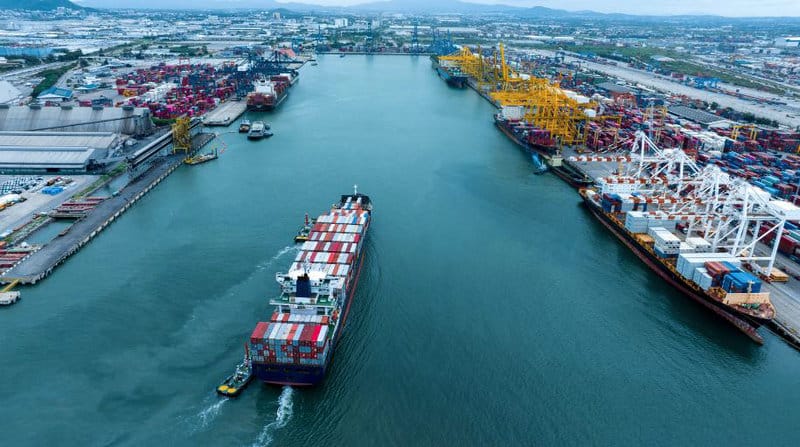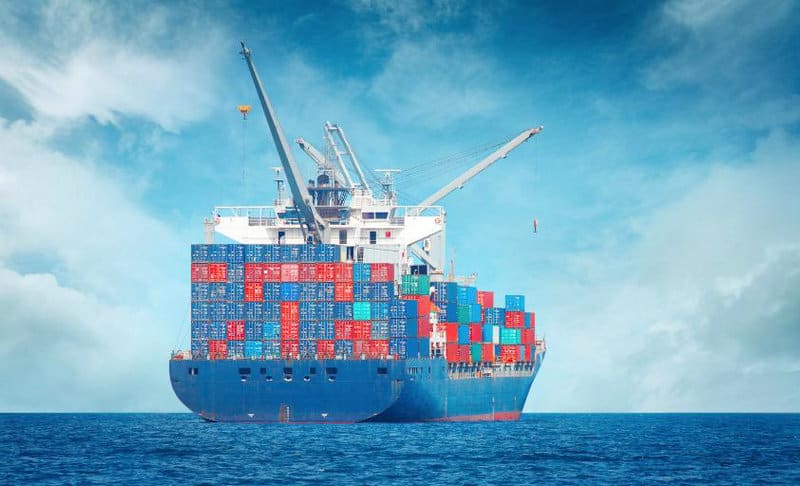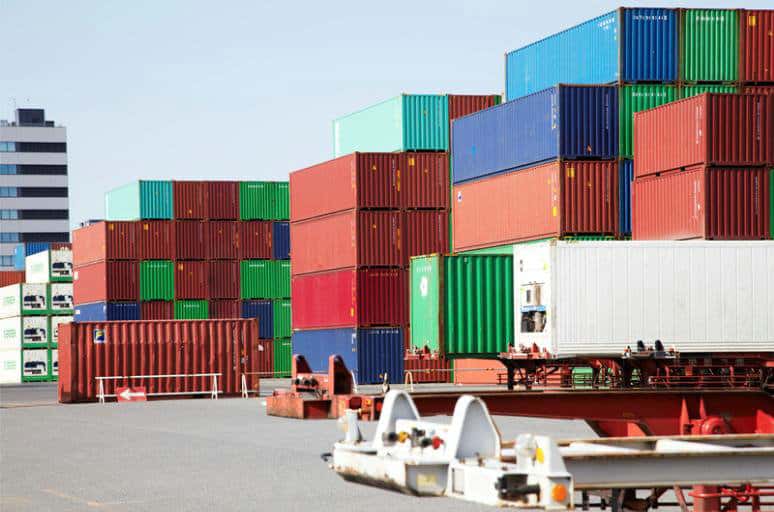
Sea freight is a critical component of global trade, enabling the transportation of large quantities of goods over vast distances. As you explore this method of transport, you will find that it involves a series of coordinated steps and processes to ensure cargo is moved efficiently from the point of origin to its final destination. Understanding the complexities of the sea freight process flow is essential for importers and exporters to optimize their supply chains and for individuals looking to navigate the intricacies of the international shipping process.
The journey of sea freight starts with the exporter’s preparation of goods and documentation, which must comply with international shipping regulations and standards. You need to be familiar with various documents, such as the commercial invoice, packing list, and bill of lading. These documents are crucial for legal and customs purposes and serve as guidelines for handling and transporting the shipment. Proper documentation helps to prevent delays, additional surcharges, or the seizure of goods by customs authorities.
Once everything is in order, the container is loaded onto a vessel and begins the transit phase. Throughout this stage, cargo is monitored to ensure it remains secure and undamaged. Additionally, freight forwarding companies and logistical partners may be engaged to facilitate the coordination of the various transportation segments, including any necessary inland transit to and from ports. The final step in the sea freight process involves the unloading of goods at the destination port, customs clearance, and delivery to the consignee. This last mile is just as crucial, requiring careful management to guarantee that the goods arrive intact and on time.
Overview of Sea Freight
Sea freight is a fundamental component of global trade, allowing for transporting large quantities of goods across oceans. It is particularly noted for its cost-effectiveness and capacity.
Key Advantages of Sea Freight
- Cost-Effectiveness: You can benefit from lower shipping costs, especially for larger shipments. Sea freight is often less expensive than air freight or other modes of transportation due to economies of scale and the ability to ship large quantities at once.
- High Capacity: Ships are designed to carry substantial cargo volumes, making them ideal for transporting large or bulky items.
- Safety: Enhanced safety measures are in place for dangerous goods, reducing the risk of accidents during transportation.
- Environmental Impact: Compared to other transport modes, ships have a lower carbon footprint per tonne of cargo moved, making sea freight a more environmentally friendly option.
Common Sea Freight Terminology
- Container: The standard-sized steel box used for transporting goods. There are various types, such as:
- Dry Storage Container: For general cargo.
- Reefer Container: For temperature-sensitive goods.
- High Cube Container: Taller than standard containers, allowing for more volume.
- Demurrage: A charge you incur when your container remains at the port longer than the agreed-upon time.
- Detention: A fee charged when you keep the carrier’s container outside the port beyond the allowed free time.
- Freight Forwarder: An agent who acts on your behalf to arrange shipments and handle the logistics of transporting goods.
Key Participants in Sea Freight
Your understanding of the sea shipment process is incomplete without knowing its key participants. Each plays a vital role in the process, ensuring the smooth transfer of goods across the seas.
Shippers and Consignees
Shippers are the original senders of goods; they initiate the process. Whether manufacturers or traders, they need their products to reach a market. Consignees receive these products. They can be buyers, stores, or final customers awaiting the arrival of the cargo.
Freight Forwarders
Freight forwarders act as intermediaries between shippers and transport services. They provide logistics expertise and handle the shipping process details, from documentation to cargo consolidation.
Shipping Lines and Carriers
Shipping lines and carriers own and operate the ships that move goods across oceans. Their fleets range from container ships to bulk carriers, providing sea freight transport services.
Customs House Brokers
Customs House Brokers help expedite customs clearance and provide clients with a smooth import/export process by ensuring shipments comply with customs regulations and documentation requirements. They are licensed and empowered by agencies like CBP to assist with cross-border trade.
Stages of Sea Freight Process

The sea freight process involves several critical stages, each with its unique significance in the journey of goods from seller to buyer across international waters. Understanding these stages ensures efficient and compliant transportation.
Export Haulage
Export haulage refers to transferring goods from your premises to the forwarder’s warehouse. This movement, typically carried out by truck or rail, can take a few hours to several weeks, depending on the distance.
Export Customs Clearance
Export customs clearance is essential; your goods must be cleared before leaving the origin country. This legal procedure involves submitting documents describing the nature, value, and destination of the cargo you’re exporting.
Origin Handling
Origin handling covers all activities related to preparing your cargo for shipment. Key tasks include cargo inspection, consolidation, and loading into containers. Your freight forwarder or agent manages this stage.
Ocean Freight
Ocean freight is the core phase, where your goods are transported by sea. Your merchandise is aboard a vessel en route to the destination port. Transit time can vary significantly based on the shipping route and service chosen.
Import Customs Clearance
Once your goods arrive at the destination country, import customs clearance must be completed before your goods can enter legally. This stage involves the payment of import duties and taxes, with requirements differing from country to country.
Destination Handling
Destination handling involves the receipt, unloading, and transfer of cargo from the vessel to the destination warehouse or terminal. This process includes inspections and planning for the next stage of haulage.
Import Haulage
Import haulage is the final leg, delivering the cargo from the warehouse to your final destination. Similar to export haulage, this can be executed by various modes of transportation and may involve multiple handlers.
Documentation Required
Proper documentation is crucial for a smooth sea freight process. Each document serves a specific purpose, ensuring legal compliance and the clear identification of cargo.
Import Permit
Certain regulated products like food, chemicals, and pharmaceuticals require permits from agencies like the FDA, CDC, and USDA specifying allowed quantities, treatments, packaging, etc.
Bill of Lading
The Bill of Lading (B/L) is the fundamental shipping document in sea freight. It serves as a:
- Contract of carriage between shipper and carrier
- Receipt for goods shipped
- Document of title, enabling the holder to claim the goods upon arrival
Commercial Invoice
The Commercial Invoice provides detailed information about the shipment for customs clearance. It must include:
- Seller and buyer information
- Description of goods
- Value and currency
- Terms of sale and payment
Packing List
The Packing List accompanies your Commercial Invoice, specifying:
- Item details (e.g., weight, dimensions)
- Packaging type (e.g., cartons, pallets)
- Identification marks and numbers for each package
Certificate of Origin
The Certificate of Origin certifies the country in which your goods were produced. Required by certain countries for:
- Tariffs determination
- Trade statistics
- Ensuring goods meet import criteria
Shipping Container Types

When importing goods via sea freight, you’ll encounter a variety of shipping container types, each designed for specific cargo needs.
Standard Containers
Standard containers, also known as dry containers, come in sizes of 20 feet, 40 feet, and a high cube 40-foot version. These are the most commonly used types for dry goods because they are watertight and protect goods from weather-related damage.
- 20-foot container: Typically measures 20′ x 8′ x 8.6′
- 40-foot container: Typically measures 40′ x 8′ x 8.6′
- 40-foot High Cube: An extra foot of height at 9’6″ to accommodate taller items
They are constructed from steel or aluminum, offering a sturdy and secure form of transporting a wide range of merchandise.
Specialized Containers
Specialized containers are designed for cargoes that require unique handling, temperature control, or dimensions.
- Refrigerated (Reefer) Containers: Specifically designed to transport perishable goods like fruits and vegetables that need to be maintained at a specific temperature. They typically come in 20-foot and 40-foot lengths.
- Open Top Containers: Have a convertible top that can be removed to ship items that are too tall for standard containers.
- Flat Rack Containers: With collapsible sides, these are used to transport oversized goods such as machinery or vehicles.
- Tank Containers: Designed for liquid cargo that requires temperature control or pressurization. They are cylindrically shaped and made of strong steel or other anti-corrosive materials.
By selecting the container that best fits your cargo, you ensure the safest and most cost-effective transport for your goods.
Types of Shipment
FCL (Full Container Load) shipment refers to having exclusive use of an entire 20ft or 40ft shipping container. The shipper pays for the full container and ships their goods without having to share space with other shippers.
LCL (Less than Container Load) shipment refers to shipping partial container loads, with goods from multiple shippers consolidated to fill a container. Shippers only pay for the space their goods occupy.
- Shipment Volume
- FCL is best for large volume shipments, usually above 15 cubic meters (CBM), or that can fill most of a container.
- LCL is more cost-effective for small-volume shipments under 15 CBM.
- Cost
- FCL has a lower cost per CBM for large volumes.
- LCL has a higher cost per CBM but allows small-volume shipping. The breakeven point where LCL becomes more expensive than FCL is around 10-15 CBM.
- Security
- FCL provides greater security as there is no comingling of goods.
- LCL has some risk of contamination or damage as goods are consolidated.
- Speed
- FCL is generally faster with less handling.
- LCL requires consolidation/deconsolidation and is slower overall.
- Flexibility
- LCL allows small, split, or partial shipments to various destinations.
- FCL requires filling containers and delivering them to one destination port.
- Convenience
- LCL has easier delivery appointments for small volumes.
- FCL can have long wait times for appointments at the destination.
FCL is better for large, high-value shipments, while LCL provides flexibility for small volumes. The choice depends on the specifics of each shipment.
Incoterms Used in Sea Freight
Incoterms are essentially a set of predefined trade terms published by the International Chamber of Commerce (ICC) to define the responsibilities of buyers and sellers. These terms determine the division of costs, risks, and transportation requirements.
EXW – Ex Works
EXW indicates that you, as the buyer, have the responsibility to collect the goods from the seller’s premises. Once the goods are ready for shipment, your obligations include arranging transportation and bearing all the costs and risks.
FOB – Free on Board
FOB requires the seller to deliver your goods on board the vessel nominated by you at the specified port of shipment. Up to the point of delivery, the seller bears all costs and risks. Once the goods are on board, you assume responsibility.
CIF – Cost, Insurance and Freight
Under CIF terms, the seller pays for the cost, insurance, and freight of your goods to the port of destination. Although the risk transfers to you once the goods are loaded, the seller contracts for insurance and freight on your behalf.
Technology in Sea Freight
Innovative technologies have revolutionized the sea freight industry by enhancing transparency and efficiency through advanced tracking and data exchange systems.
Cargo Tracking Systems
Your cargo’s journey across oceans is now traceable in real time. Cargo tracking systems utilize Global Positioning System (GPS) and Radio Frequency Identification (RFID) tags. As your shipment moves, these systems provide you with real-time location data, ensuring:
- Timely updates: via satellite or cellular networks.
- Security: increased visibility that helps in preventing theft or loss.
Electronic Data Interchange (EDI)
Enhancing communication between your business partners, Electronic Data Interchange (EDI) replaces traditional paper-based processes. Key benefits include:
- Reduced human error: Automated data entry minimizes mistakes.
- Faster transactions: Instantaneous digital document exchange speeds up operations.
With EDI, you receive shipping notices, invoices, and bills of lading directly to your systems, facilitating a smoother workflow.
Risks and Insurance in Sea Freight
Navigating the complexities of sea freight requires a sound understanding of the associated risks and the role of insurance. As you venture into maritime shipping, stay well-informed about your options for coverage and strategies to manage risks effectively.
Types of Marine Insurance Coverage
- Hull and Machinery (H&M): This is vital for covering physical damage to the ship or vessel itself.
- Protection and Indemnity (P&I): Offers liability coverage for shipowners, including third-party liabilities encountered at sea.
- Cargo Insurance: Essential for safeguarding the goods in transit against loss, damage, or theft.
- Freight Insurance: Protects you from financial loss if the freight cannot be delivered.
- General Average: Requires all parties in a sea venture to proportionally share any losses resulting from an intentional sacrifice of part of the ship or cargo to save the whole in an emergency.
Risk Management Practices
- Assess All Possible Risks:
- Weather contingencies
- Piracy incidents
- Political instability in transit regions
- Mechanical failures
- Create a Risk Mitigation Plan:
- Establish partnerships with reliable carriers.
- Ensure proper vessel maintenance and adherence to international safety standards.
- Implement thorough security measures for high-risk areas.
- Keep abreast of geopolitical developments along shipping routes.
Environmental Impact of Sea Freight
Sea freight significantly influences global ecosystems through emissions and waste discharges. Your awareness and understanding of these impacts can guide responsible decision-making.
Emissions and Pollution Control
The shipping industry is responsible for a substantial portion of global emissions, particularly carbon dioxide (CO2), sulfur oxides (SOx), and nitrogen oxides (NOx). You should note that, according to the International Maritime Organization (IMO), ships are major emitters of SOx, which can lead to acid rain and respiratory problems in humans.
- CO2 Emissions: A single large container ship can emit as much CO2 as 75,000 cars.
- SOx and NOx Emissions: These gases lead to the formation of acid rain and contribute to respiratory issues.
To mitigate these emissions, the IMO has set regulations limiting the sulfur content in fuel oil used on board ships. The introduction of the global sulfur cap mandates that fuel oil must contain no more than 0.50% m/m of sulfur.
Furthermore, the use of scrubbers and exhaust gas cleaning systems allows vessels to continue using high-sulfur fuel by cleaning the emissions before they are released into the atmosphere. The adoption of alternative fuels like liquefied natural gas (LNG) also provides a cleaner option that reduces air pollution.
In terms of CO2, the Energy Efficiency Design Index (EEDI) for new ships aims to make ship design more energy efficient and reduce emissions. Additionally, operational measures such as slow steaming, where ships operate at speeds lower than their maximum, contribute to reducing overall emissions from sea freight.
Trends and Future of Sea Freight
The sea freight industry is evolving rapidly, with significant advancements influencing how goods are transported globally. You’ll see increased digitization, aiming to streamline the shipping process and enhance tracking capabilities. Digital platforms are being widely adopted for document handling, reducing the backlog of paperwork and improving efficiency.
Sustainability is another critical trend, as environmental regulations tighten. You will notice a shift towards cleaner fuels and eco-friendly vessels, which will likely become industry standards. The International Maritime Organization (IMO) is setting ambitious targets to reduce greenhouse gas emissions, prompting you to adapt to new technologies and fuels.
Automation is on the rise, with advancements in autonomous vessels and robotics for loading and unloading. You can expect a reduction in human errors and increased safety, leading to more predictable and reliable shipping schedules. Moreover, the incorporation of blockchain technology ensures more secure and transparent transactions.
Expect to see a growth in mega-ships, which can carry ever-larger quantities of cargo. With this comes the need for port infrastructure to adapt, so you may see significant investments in port upgrades and expansions to accommodate these vessels’ size and operational requirements.
Lastly, you should be prepared for more collaborative shipping models. Co-loading and slot sharing are becoming popular, optimizing container space and reducing costs. This collaborative approach will help you stay competitive in a market that continually demands efficiency and cost-effectiveness.
Why Choose Us? Luckystar Logistic
Luckystar Logistics, established in 2022, is a licensed Non-Vessel Operating Common Carrier (NVOCC) overseen by the Federal Maritime Commission. With a mission to provide quality shipping services at reduced costs, the shipping company serves key global trade lanes between China, the USA, Canada, and Europe. Led by a core team with over 20 years of logistics expertise, Luckystar aims to be a dependable, adaptable, and responsive partner for global door-to-door transportation.
Since starting operations, the company has focused on offering premium yet affordable solutions for both consolidation and full container load shipments. Luckystar touts accuracy in shipping timelines, enabling businesses to swiftly meet customer demands. Its extensive network reaches most corners of the world, supporting expansion into new markets. Stringent processes allow for live tracking and progress updates at every leg of a shipment’s journey. And for hazardous materials transport, Luckystar’s seasoned staff provides safe, efficient handling.
If you seek to work with an experienced freight forwarder who has expertise in managing international sea freight, contact us. We’re always ready to help. Offering the unbeatable cheapest shipping rates for international shipping, our services are more affordable than you’d believe. Don’t hesitate! Get in touch with us today.
